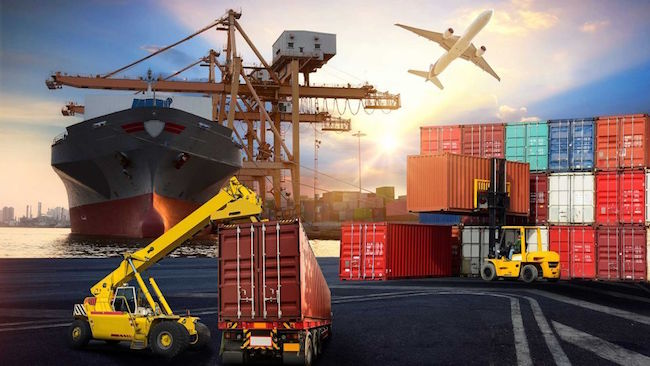Michelin leads the smart mobility revolution with data and AI
Michelin is undergoing a strong transformation by applying AI and smart analytic, helping lead the smart, safe, and sustainable mobility revolution in the Industry 4.0 era.




Weak synchronization and cost burden, are the biggest barriers for the logistics industry, potentially derailing the sustainable growth of Vietnam's economy.

The logistics industry is one of the top growing industry in Vietnam, however, poor synchronisation and high cost are still remaining challenges resulting in the lack of competitiveness in the industry.
This issue could potentially derail the growth of the economy and erodes the trust of investors in this sector.
On April 16, the existing problems in the logistics industry were identified in the national conference on Vietnam's logistics sector.

The logistics industry in Vietnam is still a small scale, fragmented service as it only provides single and simple services rather than a consolidated one.
Currently, transportation infrastructures of Vietnam is inadequate compared to other countries. For instance, loading/unloading zones in Hanoi and Ho Chi Minh city are both small size warehouse, which fail to meet the requirement. Most of the intermediary depots are also unable to receive and handle container due to their quality.
The construction of infrastructure such as seaport systems, warehouse systems navigable channels, inland waterways, roads, railways and airways must be enhanced.
At the same time, a software infrastructure that is compatible with the logistical mechanisms, policies, and corridors must be developed to create favorable conditions for customers to apply customs procedures such as e-customs, e-customs data processing, payment of taxes and fees by electronically.
In order to develop a sufficient logistics services, besides investing in infrastructure such as ports, warehouses, roads, etc., there should also be policies and mechanisms to help the entire supply chain system operate effectively.
Besides poor synchronisation, high cost is another concerning issue to the logistic industry that affects to Vietnam’s competitiveness and potentially worsening the economy. According to World Bank report, the logistics cost in Vietnam is approximately 20.9 percent compares to the GDP.
In reality, goods have to go through too many intermediaries, from the supply of raw materials to production, to the distribution of goods to consumers, increasing final costs.
Additionally, since the retail network layout is relatively dense in urban areas, while large warehouses are too far away, plus most businesses are not aware of the role of each warehouses such as primary, secondary and central warehouses, resulting in either low transport costs but high inventory holdings or vice versa, one of which would also increase logistics costs.
Furthermore, enterprises in Vietnam do not usually use outsourced services such as customs brokerage, accounting agent but mainly self-employed. Self-employed businesses and self-investment in warehouse construction or transportation equipment purchasing indicate that it will require a lot of investment capital and difficult to reach to professional level. Since the ability to exploit is low, the return of capital is also low, inefficient and higher logistics costs.
Although the policies and regulations of the government have a strong influence on the growth of logistics industry, the law system in Vietnam is still fairly complicated and inconsistent, for instance, customs clearance operation.
Also, multiple layers of administration levels of Vietnam is also more prone to corruption, potentially increases in unnecessary cost and time for a smoother freight processing.
All ministries, sectors and localities must be more aware of this issue as this is a bottleneck for the logistics industry, good resolution will save costs, increase product prices and thus, increase the competitiveness of Vietnam.
Michelin is undergoing a strong transformation by applying AI and smart analytic, helping lead the smart, safe, and sustainable mobility revolution in the Industry 4.0 era.
LG Innotek Vietnam Hai Phong secured a $200 million IFC loan as revenue slows, aiming to expand camera module production while meeting sustainability targets.
For Koen Soenens, Sales and Marketing Director at DEEP C, empathy is a compass that guides major deals, the way a leader builds a team, and the ambition to create a sustainable industrial zone that carries a Vietnamese identity.
Taseco Land has shifted its listing to HOSE and introduced a new upward-pointing arrow logo - a visual statement of its strategy to raise capital, expand its land bank, and strengthen its standing in Vietnam’s real estate sector
Located in the heart of Ho Chi Minh City, SAP Labs Vietnam is the second SAP Labs Network hub in Southeast Asia, following Singapore and is one of 20 countries that have SAP Labs globally.
Solar & Storage Live Vietnam event has been running since 2017 and the 2025 edition will be the biggest yet.